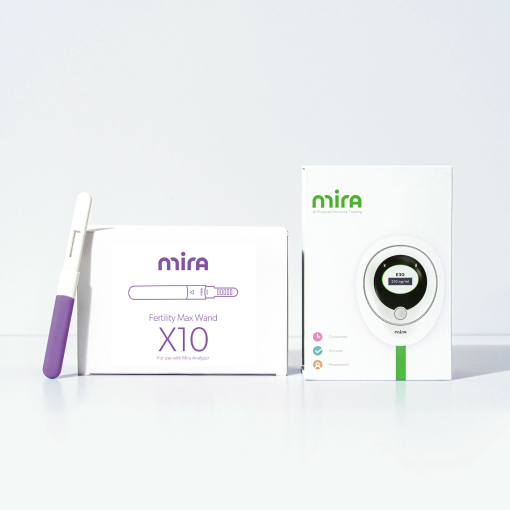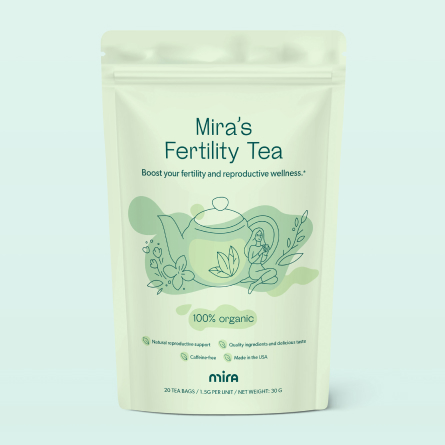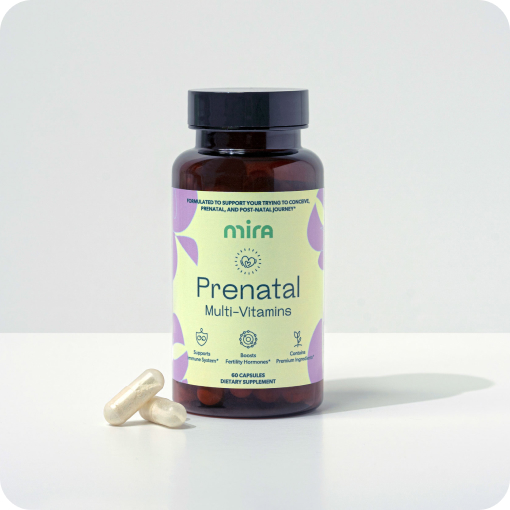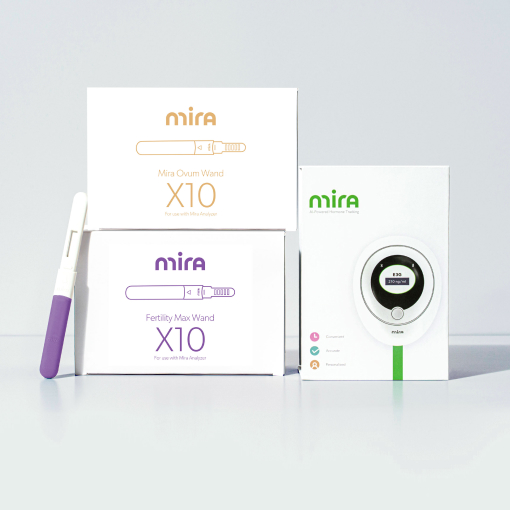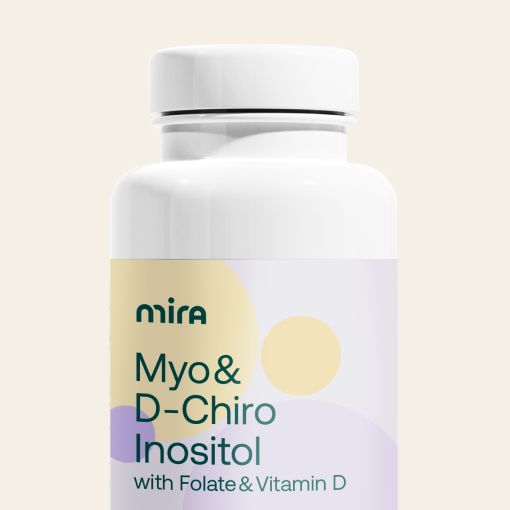15 Ways to Increase Progesterone: Diet, Supplements & Lifestyle Tips
Progesterone, along with estrogen, is one of the two major female sex hormones. Because it plays an important role in pregnancy, menstruation, and overall health and well-being, you can run into problems when progesterone levels are too low.

If you suspect you may be experiencing low progesterone, there are some easy ways to raise your levels naturally. In this post, we will look at three major categories: diet, supplements, and lifestyle tips and explore how each can help keep your progesterone levels in check.
Understanding the Role of Progesterone
You can learn a lot about the role of progesterone from looking at the etymology of the word itself: the prefix “pro-” means to promote, and the rest of the word, “-gesterone,” refers to gestation, a.k.a. pregnancy. In other words, progesterone is a reproductive hormone that’s necessary to promote a healthy pregnancy.
Even so, progesterone is produced by the corpus luteum (the transformed follicle that releases an egg during ovulation) whether you become pregnant during your menstrual cycle or not. If you do become pregnant, progesterone will rise to thicken the uterine lining, which provides nutrients to the developing fetus.
Because progesterone is so important in pregnancy, experts believe that low progesterone levels may contribute to recurrent miscarriages in some women. Accordingly, progesterone therapy has been found to have a significant benefit in helping women with recurrent miscarriages get and stay pregnant.
If you do not become pregnant during your cycle, progesterone still peaks, but it declines toward the end of your cycle to signal to your body that it is approaching menstruation. If you have anovulatory cycles where you do not ovulate, you may not experience this peak and decline in progesterone and may fail to have a menstrual period as a result. Tracking your urine hormone concentrations with a digital fertility tracker like Mira can help you determine if your progesterone levels are rising and falling as they should.
Birth control pills work to produce a similar effect. They contain synthetic forms of progesterone and estrogen, or sometimes progesterone only, to keep hormones at a steady level throughout your cycle. This prevents you from ovulating and having a true menstrual period — a “period” on hormonal birth control is actually known as withdrawal bleeding, and is not considered a “true period” — so you cannot get pregnant.
In addition to playing a role in reproduction, progesterone also contributes to many medical conditions. Progesterone pills are used to treat reproductive health conditions like endometriosis and polycystic ovarian syndrome (PCOS). The hormone may also contribute to other medical conditions not involving the reproductive system, including the growth of some cancers and migraine headaches.
What Does Low Progesterone Look Like?
If your progesterone levels are low, you might be experiencing uncomfortable symptoms such as:
- Low sex drive
- Hot flashes
- Migraine headaches
- Mood changes
- Anxiety
- Irregular or absent periods
You might also be experiencing fertility issues, such as difficulty conceiving or multiple miscarriages.
If you suspect that your progesterone levels could be low based on your symptoms, it’s a good idea to check in with your doctor. They can conduct a blood test to determine if your progesterone levels are too low.
How to Increase Progesterone Naturally
In addition to taking a form of progesterone as medication (known as progestins), there are also certain foods and lifestyle changes you can make to help boost your progesterone levels naturally.
Foods that increase progesterone
Healthy fats
Sex hormones like progesterone are made from protein, fat, and cholesterol. When the body doesn’t derive enough of these nutrients from its diet, hormone production can suffer. For this reason, those eating a low-fat, low-cholesterol diet may suffer from symptoms of low estrogen or progesterone.
This is why your body needs a steady supply of healthy fats in order to optimize hormone production.
So, what types of fats are considered “healthy?”
In general, fats that can be found in natural foods are good for you, while those found only in manufactured, processed foods are harmful to your health. Namely, you should avoid trans fats, found in hydrogenated and partially-hydrogenated oils, which are manmade and contribute to a number of health problems.
Instead, make sure you are eating enough saturated and unsaturated fats, including monounsaturated and polyunsaturated fats. You can find these fats in a number of whole foods.
Saturated fats are primarily found in animal products like butter, cheese, and meat, but they are also found in coconut oil. Unsaturated fats, including monounsaturated and polyunsaturated fats, can be found in fatty fish (such as salmon), nuts, vegetable oils (like olive and avocado), and flaxseed.
Nuts
Some of the best foods you can eat when trying to raise your progesterone levels are nuts and seeds. As mentioned previously, nuts and seeds are rich in unsaturated fats, which are essential nutrients for sex hormone production. However, nuts and seeds have other benefits on progesterone production, too.
Many nuts and seeds are also rich in zinc, a mineral that helps tell the pituitary gland to regulate the production of follicle-stimulating hormone (FSH) during the first half of your menstrual cycle. FSH triggers the growth of a follicle containing an egg in preparation for ovulation. Later, once the egg is released, the follicle transforms into the corpus luteum, which produces progesterone. Foods rich in zinc can promote healthy progesterone levels by keeping this process on track.
In addition to zinc, the majority of nuts and seeds contain magnesium, another essential nutrient for regulating the menstrual cycle. Magnesium helps regulate the pituitary gland, which not only produces FSH but also produces luteinizing hormone (LH). LH surges around ovulation and if you do not ovulate, this process will not occur. Without ovulation, progesterone levels will remain low due to the lack of a corpus luteum.
Thus, eating foods rich in magnesium, like nuts and seeds, can boost your progesterone levels by keeping ovulation on track. Try almonds, cashews, walnuts, sunflower seeds, and pepitas to raise progesterone naturally.
Chocolate
Believe it or not, chocolate — especially dark chocolate containing at least 70% cacao — can be part of an overall healthy diet! Eaten in moderate amounts, dark chocolate may even improve your hormone health.
Dark chocolate is a rich source of magnesium — which, as we now know, plays an important role in regulating ovulation and triggering progesterone production. In fact, it’s been theorized that the high magnesium content of chocolate explains why so many women crave it before their menstrual periods!
The magnesium content of chocolate comes from the raw cacao that it is made from and the darker the chocolate (i.e. the greater the percentage of cacao), the more magnesium it contains. Look for 70% dark chocolate or higher to maximize the nutritional value of this sweet treat!

Chicken
Amino acids, the building blocks of protein, are used to synthesize hormones like progesterone within the body. The body needs amino acids to function, but it cannot make them by itself. In other words, you must consume the nine essential amino acids through your diet to maintain your hormone health and overall well-being.
A complete protein is one that contains all nine of the essential amino acids. While there are some plant-based proteins that are considered “complete,” most of them are animal proteins, like meat and poultry. One of the nine essential amino acids that is especially important to progesterone production is L-arginine, which increases blood circulation so your ovaries can function optimally throughout your cycle.
When it comes to animal protein and progesterone foods, chicken is a complete protein and the “white meat” found in the chicken breast — is a great choice because it is both lean and versatile.
Oats
If you are looking for a plant-based protein source, oats are a strong choice for hormone health. Boasting about 11g of protein per 100g, oats are higher in protein than many other grains. Not to mention, oats contain all nine of the essential amino acids the body needs to function optimally — and synthesize important hormones.
Technically, oats are not considered a “complete” protein because they contain only small amounts of certain amino acids, particularly lysine. However, you can make oats into a complete protein by adding other incomplete proteins to your meal, especially those containing lysine.
Lifestyle & exercise tips to increase progesterone
Maintain a healthy weight
Estrogen dominance, which can result when progesterone is lower relative to estrogen, is a common consequence of weight gain in women.
Progesterone levels have a “chicken and egg” effect on your weight: healthy progesterone levels can reverse weight gain by having a diuretic effect, but in overweight individuals, weight loss can also help bring hormones back into balance.
Keeping your BMI in a healthy range by eating healthfully and exercising appropriately is an overall good idea for your hormone health and fertility (more on how to reverse estrogen dominance naturally here).
Don’t overdo it with exercise
While exercise is important for your overall health, it’s also important not to overdo it. Why? Because too much exercise and stress on the body can lead to hormone imbalance.
How exercise affects hormone levels
Over-exercising can lead to a condition known as hypothalamic amenorrhea, which causes ovulation and menstruation to stop. Essentially, the body stops producing certain hormones in order to conserve energy to survive.
When ovulation does not occur, the corpus luteum does not form – which usually produces progesterone during the second half of the menstrual cycle. This can then lead to low progesterone levels.
Recommended types of exercise
There is no specific exercise that you should or shouldn’t do to increase progesterone levels. Instead, it’s all about finding the right balance that works with your existing lifestyle and fitness level.
In general, try to avoid crash diets, intense challenges, and rigorous workout regimes. Instead, opt for activities that you enjoy doing such as jogging, hiking, swimming, yoga, strength training, dancing, and cycling. Even something as simple as walking can be extremely beneficial to your hormone health.
The important thing to remember while exercising is to stay in tune with your body, take regular rest days, and make sure that you are consuming enough food to fuel your activities. You should also make sure that your weight stays within a healthy range.
Limit stress
When our stress hormone (cortisol) spikes, it blocks progesterone receptors and limits the activity of progesterone. Even if you have enough progesterone in your body, you might experience symptoms of low progesterone when stressed due to this physiological response.
While you cannot escape everything that stresses you out, you can find proactive ways to manage your stress. Prioritizing your daily to-do list (and making time for self-care) can help you find balance in your everyday life. Mindfulness techniques like meditation or yoga can also be helpful for managing your stress.
Reduce caffeine
If you’re a fan of caffeine, it might be time to cut back. Research suggests that those who drink more than four or five cups of coffee may experience high levels of stress hormones. While you definitely don’t need to cut out caffeine altogether, too much can create estrogen dominance, leading to low progesterone levels by comparison.
Experts say that healthy adults can safely consume up to 400 mg of caffeine per day — about the amount of caffeine found in four cups of brewed coffee. If you are trying to get pregnant, it is preferable to limit caffeine intake to no more than 200 mg daily. As long as you stay within these limits, you should not see negative effects on your hormone balance.
Watch your blood sugar
When your blood sugar is high, the body will produce more insulin to help bring glucose back into balance. This can cause some individuals to become insulin resistant, meaning that even when their body pumps out insulin, they are not sensitive to its effects. As a result, the body continues to overproduce insulin, leading to weight gain.
High insulin levels cause the body to make more cortisol — which, as mentioned previously, can deplete progesterone reserves. In other words, it’s important to keep your blood sugar in balance when you have low progesterone. To manage your blood sugar levels, eat at regular times, don’t skip meals, and drink water instead of juice and soda.
Recommended for you
Navigate your fertility with peace of mind
Herbals & Supplements that Increase Progesterone
If you are struggling with low progesterone, certain herbs and supplements may help rebalance your hormones. While you can usually get all the nutrients you need from a whole foods diet — you may occasionally need a boost when seeking to balance your progesterone levels naturally.
Chaste berry
Chasteberry, or Vitex, is an herbal supplement that has been used for centuries to treat hormonal health conditions. It can be used to relieve symptoms of premenstrual syndrome (PMS) as well as to rebalance progesterone levels.
It’s believed that taking chaste berry supplements could increase progesterone levels by regulating the pituitary gland. Evidence to support this practice is limited, but since chaste berry is usually well-tolerated, there’s probably no harm in trying it for yourself.
Zinc
As mentioned previously, zinc plays an important role in regulating progesterone levels by interacting with the pituitary gland to trigger the production of FSH. This keeps ovulation regular, ensuring that the corpus luteum forms and produces progesterone during the second half of the menstrual cycle.
You can get zinc from food sources like nuts and seeds, but also from mineral supplements. Avoid consuming more than 40 mg of zinc per day from food and supplements combined. You should also avoid intranasal zinc supplements, which have been linked to loss of smell.
Magnesium
Like zinc, magnesium helps regulate the pituitary gland to keep ovulation — and progesterone levels — on track. You can get magnesium from food sources like nuts and chocolate, but also from mineral supplements.
The maximum upper intake level of magnesium that you should consume per day from supplements is 350 mg, though magnesium toxicity is not a concern for most healthy people. However, it is possible to get too much magnesium from taking supplements, so use them with caution.
Vitamin B6
Vitamin B6, or pyridoxine, may be a valuable supplement for women looking to raise their progesterone naturally. Studies show that taking 200-800 mg of vitamin B6 per day may increase progesterone levels and curb symptoms of premenstrual syndrome.
Women ages 19 to 50 need at least 1.3 mg of vitamin B6 per day. Before considering taking high doses of vitamin B6, consult your doctor first, as high doses may be the cause of neurological side effects. You should take dietary supplements of such doses under the supervision of a knowledgeable health care provider, because of the potential for side effects and interactions with medications.
Vitamin C
Like vitamin B6, vitamin C supplements can help raise your progesterone levels naturally. According to one study, women who took 750 mg of vitamin C per day saw an increase of 77% in their serum progesterone levels. The average daily recommended amount of vitamin C is 75 mg, so make sure you are getting at least that much.
Use caution when taking vitamin C supplements, as it is possible to overdose on them. For adults, the tolerable upper limit of vitamin C is 2,000 mg per day from food and supplements combined.
Alternative Therapies for Increasing Progesterone
Acupuncture
Acupuncture is a type of treatment associated with Traditional Chinese medicine. It involves the penetration of thin, metallic needles across specific pressure points of the body. It is believed that the practice of acupuncture helps to stimulate the central nervous system in order to help relieve pain and promote healing.
So what does acupuncture have to do with increasing progesterone?
Interestingly, research suggests that acupuncture treatments can help to increase both progesterone and estrogen.
It’s important to note that acupuncture is just one component of a holistic approach to health. In order to see the best results, certified acupuncturists often recommend that certain diets, supplements, and exercises should be followed alongside acupuncture treatments.
Massage
Massages are a great tool for increasing circulation, decreasing stress, and promoting restful sleep – all of which help to keep your hormones (including progesterone) in balance.
While some wellness centers promote “fertility massages”, it is important to be aware that there is no scientific evidence that suggests any one particular type of massage treatment can “cure” infertility, help you get pregnant, or magically balance your hormones.
Instead, massages should be seen as a general tool to help promote relaxation and decrease stress.
Chiropractic care
Similar to massages, chiropractic care can also be used as a tool to help promote circulation, general health, and hormone balance. This is especially true if you are experiencing any pain due to muscle or joint problems – as pain can often interfere with exercise, sleep, and maintaining a healthy routine.
Again, there is no chiropractic treatment that can directly cure hormone imbalance. It can however help to support overall health and well-being.
Where to Start
If you suspect you have low progesterone levels, it’s important to confirm the diagnosis by getting an accurate measure of your serum progesterone. Your primary care doctor or OB/GYN can read your serum progesterone levels with a simple blood test — and make sure they fall within a healthy range (more on PdG tests here).
You can also watch your progesterone levels at home using a digital hormone tracker like Mira. Mira measures hormones like progesterone, FSH, and LH in your urine to help you identify hormone imbalances and pinpoint your menstrual cycle with greater accuracy.
How to Track Your Progesterone Levels
With the Mira fertility tracker, measuring your hormone levels is easy and intuitive. Mira uses test wands (similar to a home pregnancy test) to measure hormone concentrations in your urine. After inserting the wand into Mira, it reads your results and sends them to the Mira app, which graphs your exact hormone curve to give you insight into your menstrual cycle. You can use these results to determine if your progesterone levels are too low, too high, or just right. To get the Mira digital fertility tracker, click here.
Instead of juggling multiple bottles and keeping track of various supplements and vitamins each day, you can simplify your routine with Mira. Its products are thoughtfully combined to address specific needs, like increasing progesterone levels, managing PCOS and supporting a healthy pregnancy. Mira’s PCOS supplements offer a blend of key nutrients including Inositol, which helps naturally balance hormones and improve fertility. This means you can focus more on your well-being and less on your supplement schedule.
Similarly, when preparing for motherhood, Mira’s prenatal vitamins deliver a comprehensive mix of essential nutrients, streamlining your daily health regimen. These vitamins are specially formulated to maintain optimal progesterone levels, crucial for a healthy pregnancy. With Mira, you get the combined benefits of multiple vitamins in one, ensuring you and your baby receive the best care in the simplest way.
FAQs
What are the normal progesterone levels?
Typical progesterone levels among nonpregnant, ovulating individuals can range from 0.1 to 25 ng/mL. Among pregnant individuals, progesterone levels can rise up to 290 ng/mL during the third trimester of pregnancy.
How long does it take to see results from natural progesterone therapy?
Everyone’s body is different. However, on average, it would likely take a few weeks to a few months to see any tangible results after making lifestyle changes.
Can men benefit from progesterone therapy?
Yes. It’s also possible for men to experience low progesterone, and they can benefit from lifestyle habits that help to keep their hormones in balance.
Common symptoms of low progesterone in men include depression, mood swings, low libido, erectile dysfunction, loss of muscle mass, and fatigue. If this resonates with you or your partner, it’s a good idea to seek help from a doctor. They can conduct the appropriate testing and offer further advice on treatment.
What are the side effects of progesterone therapy?
If your doctor has prescribed progesterone as a medication in the form of progestin, you may experience a range of side effects including headache, breast tenderness, upset stomach, constipation, fatigue, and muscle pain.
If you are not taking medication but have made certain lifestyle changes in order to increase progesterone levels, you may experience the following:
- Side effects of a change in diet: headache, bloating, irritability, diarrhea or constipation, fatigue, food cravings, and difficulty concentrating.
- Side effects of increased exercise: muscle aches, cramps, tiredness, fatigue, and changes in appetite.
In the long term, any positive lifestyle changes made will ultimately help to improve your overall health and well-being. This includes tangible improvements in mood, sleep, energy levels, and libido.

Mira’s Editorial Process
All content produced by Mira meets stringent editorial standards, ensuring excellence and accuracy in language and medical precision. Every piece undergoes thorough fact-checking and review by qualified professionals. Check out our full editorial process to learn more.


